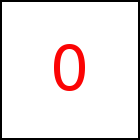Continuations - taccGL™ Tutorial
Using JavaScript you can assign a transition to a JavaScript variable.
var a=taccgl.actor("testimg").to (200,500,0).start(); var b= a.cont().to (1000,500,0).start(); var c= b.cont().flyHome().start(); | RUN |
Later on, you can define a continuation of a previous transition
using cont. This creates a new transition, which shows
the same object as the continued transition at the position where the
continued transition stopped. So further animation starts where and when
the previous transition stopped.
A common very simple use of cont is to freeze an
element for a while using cont().dur(2).start(). Because
no animation is specified, the element just stays in its current position.
taccgl.actor("testimg").to (400,400,0).start().cont().dur(2).start(); | RUN |
Note the difference to the already explained showAfter. showAfter
displays the element until the complete animation finishes.
The cont().dur(2).start(), however, freezes the element for a specified
duration and it increases the total duration of the complete animation.
Note that the complete animation runs until each transition finished (not counting
any showAfter).
contAccel
contAccel can be used to avoid sudden changes in velocity or
direction. It continues moving the element with its pervious velocity
and gradually accelerates the object to its new destination.
Note that contAccel works quite differently than cont
because it needs the destination coordinates and the duration as parameters.
var a=taccgl.actor("testimg").to ({el:"ex40",ox:-100,oy:-500}).vBegin(0,0,0).dur(3).start(); var b= a.contAccel({el:"ex40",ox:100,oy:000},3).start(); var c= b.contAccel({el:"ex40",oy:-300},3).start(); c.cont().flyHome().start(); | RUN |
WebGL™ is a trademark of the Khronos Group Inc.
| 




